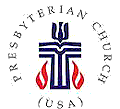Do you ever people watch at the airport? One of my favorite games to play is guessing where people are going, or where they’ve been. And you can often do it with only a few clues at the security check point, as bag contents are often spread out before you. It’s incredible what people take in their carry-on baggage. A few weeks ago in Galveston, Texas, I was next to a family laden down with Mardi Gras beads. One young woman had a necklace with large ornament softball size balls – apparently that wasn’t fitting in her checked luggage. A few years ago I watched a man talk at length with a TSA official about whether or not he was able to carry-on a box of Velveeta cheese. I’m still wondering about that one. What we pack says a lot about us, and it helps shape the journey we’ll have along the way. What are those things that we can’t live without, even for a few hours on a plane? Today’s gospel lesson from Mark brings a direct and startling instruction about what the disciples should make sure they have with them in their carry-ons: the cross.
In the first century, the mention of the cross would have some immediate connotations. This was a device of torture – usually reserved for slaves and political criminal – that represented humiliation and extreme agony. Crucifixion was extreme, and appropriately terrifying. It would have been an exclamation point or bolded underline of his statement just a few sentences before about the suffering the “son of man” would experience. Such an image would have rattled the disciples to the very core. Their jaws must have been on the floor.
In contrast, we don’t tend to have such a strong reaction to seeing the cross today. It sits at the top of a steeple, or looms large in the front of our church sanctuaries. We wear it as jewelry and put it on bumper stickers and decals on our cars. When we look at it, we are slower to connect it as a startling image of torture and suffering. Many theologians have tried to modernize this image for us today, saying that the equivalent in our society today would be something like putting a fully functional electric chair at the entrance to our houses of worship. That is a thought that could easily put pits in our stomachs and make words get caught in the lumps in our throats. If that’s the case, wouldn’t it be more comforting to replace our crosses with another symbol? Perhaps the empty tomb, or a smiling, thumbs-up “Buddy Christ” as in the movie Dogma to put a fresh face on our faith. It’s a tempting idea. We don’t like to think about the cross too much. Theologian William Placher offers that:
we do not think about its meaning because we want to call ourselves Christians while avoiding the thought that the implications of our faith might threaten our comfort[i].
But Mark’s gospel doesn’t let us off the hook that easily. Jesus calls his disciples, and us, to take up the cross, and consider all it implies.
The cross represents a pivotal moment of our faith – Jesus’ death.
the cross represents the culmination of the incarnation: divinity fully united with humanity. Christ did not take on a “higher” human nature while avoiding the tough side of it . . . The cross shows that in Christ God is with us, no matter what. Even when we doubt or disbelieve or think ourselves completely cut off from God, Christ has been there before us. Christ is, as the philosopher Alfred North Whitehead said of God, “the great companion- the fellow sufferer who understands”[ii].
On the cross, God’s love to us is realized. As Protestant Christians, our cross is empty, primarily because we anticipate the rest of the story – we know that Jesus wasn’t left on the cross. In this anticipation of the resurrection, though, we must be careful to make sure that our empty crosses are not empty of meaning, too.
In his teaching in Mark, Jesus helps the disciples, and us, connect the meaning of the cross to the foundations of discipleship. Verse 34 spells it out: Jesus says, “If any want to become my followers, let them deny themselves and take up their cross and follow me.” The instructions are bookended with the word “follow.” This reminds us that we’re not trailblazing something totally new. Rather, we are traveling a path with someone who has been there and will be there with us along the way – Jesus. Along the way we are to do two things.
First, deny ourselves. In Lent, you might hear a lot about this step, and as we near the halfway point, such instruction might be the reminder you need if you have given something up for the season. Denying ourselves, though, doesn’t just come from giving up chocolate or soda. It can also be about setting our own selfishness aside, and take seriously that part of the Lord’s Prayer that says “THY will be done,” and invest our time and energies on making GOD a part of our decisions. In short, it’s about focus –not on ourselves, but on God. In a world that often pushes us to be self-serving, this alone would be challenge enough. But Jesus isn’t done yet.
The second step is to take up our crosses. Remember, the cross is the symbol of our salvation. Note, Jesus doesn’t say “ok, now that you have faith, I’d like you to very carefully wrap up this cross in bubble wrap, tucking your socks and soft clothing around the joints to protect it, and put this central part of your faith in your checked luggage.” Jesus doesn’t tell us to check the cross and pick it up at the end of the journey. He tells us to do the opposite – take it up, in essence to put it on our carry-on luggage. Keep it with us as something that is vital and important to us – so important we wouldn’t want to let it out of our sight or possession. As the carry-on baggage sign at Southwest (the one on the cover of the bulletin) remind us, “if it fits, it’s a carry-on.” Perhaps our task, then, is to consider how well or not the cross “fits” into our lives. Or better, how our lives fit into our understanding of the cross.
For many, perhaps even some of us this morning, the idea of “take up your cross” is closely associated with a particular hardship in their life they must endure, because, after all, Jesus suffered, and instructed his disciples to take up their crosses. It’s not hard to see how we end up with this conclusion from this passage, but it breaks my heart to think of the implications of this theology taken to its end. To bring to mind those who are being oppressed, and are told they must simply endure it. To imagine the woman who is in an abusive relationship, but continues to return to the abuser believing that this is her cross to bear. Or a man who does not reach out to a sponsor or go to a meeting, thinking he has to battle addiction as his own cross. Let me be very clear here. Jesus’ instruction to “take up your cross” is NOT God’s instruction to us that we must passively endure discrimination or actively experience real harm from others in order to be in solidarity with Christ. That is neither the God I know, nor a God I could worship faithfully. That is not the God we find on the cross. Jesus did not die on the cross so that we could join him and suffer. Christ died on the cross so that we might have LIFE, and life abundant.
Taking up the cross is not about being tied up in its suffering. Through the cross, God promises that suffering is not the end result. From death on the cross springs a new life, an eternal life, made possible through Jesus’ resurrection. Reconciliation and wholeness is the end for which I believe God yearns and desires. And so, to take up our cross means to live our lives in a way that seeks wholeness and reconciliation for all of God’s children; to be a people who reflect the God we worship.
Carrying the cross marks us as God’s own, as Christians, and demonstrates God’s love for the world. We take up the cross when we speak words of compassion rather than words of hate at those who have frustrated us, and when we refrain from snarky comments behind their backs. We take up the cross when we work to make sure children do not go hungry. We take up the cross when we pray for our loved ones, our community, and our world. We take up the cross when we come to this table for communion, experiencing the real and powerful presence of Jesus in our midst as we share in bread and cup.
Sometimes carrying the label of Christian is easy and light; other times carrying the label of Christian can feel like dragging a solid wooden cross through the mud. And yet, we are called to take it up, each and every day. Tom Long reminds us that:
sometimes, frankly, the commands of Jesus and the demands of life – a job, a social setting, or a relationship – are in tension, if not outright conflict, and the workaday life of Christians is filled with a thousand moral dilemmas.[iii]
We need the cross with us on the journey to keep us grounded in our faith, rooted in the heart of what really matters. As followers of Christ, we have been entrusted with the cross. But it is up to us to decide whether we will put it in our checked bags, or be brave enough to carry it on with us wherever we go. Amen.
~Rev. Elizabeth Lovell Milford
March 4, 2018
————————————————————————————
[i] William C. Placher, Jesus the Savior: The Meaning of Jesus Christ for Christian Faith (Louisville, KY: Westminster John Knox Press, 2001). 111.
[ii] Placher, 128-129.
[iii] Thomas G. Long, Testimony: Talking Ourselves into Being Christian (San Francisco, CA: Jossey-Bass, 2004), 89.





Leave a Reply
You must be logged in to post a comment.